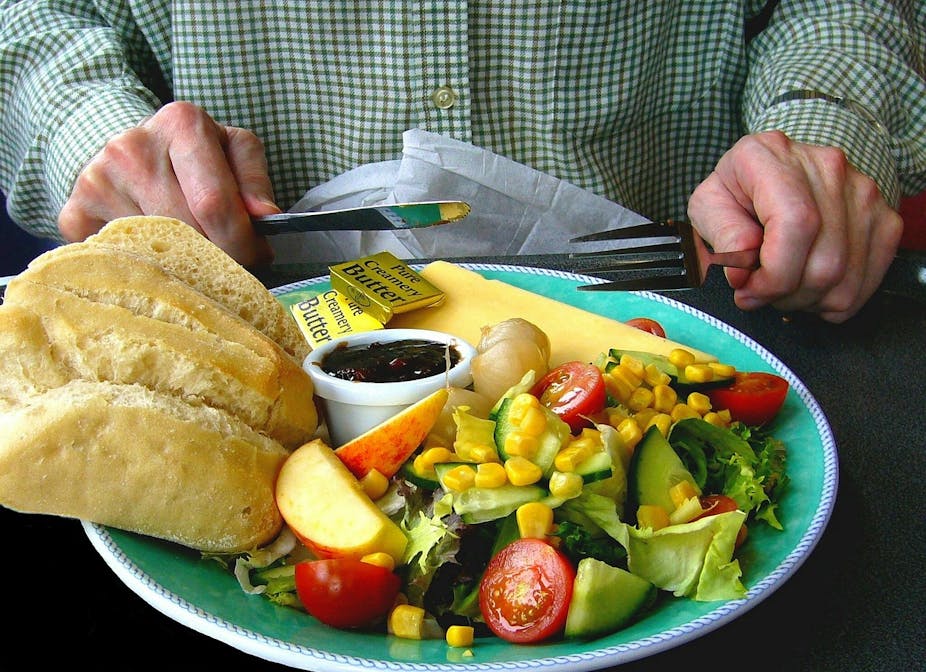The findings of a study from researchers at UCL suggested we should be eating seven different portions of vegetables and fruit a day, rather than the five as currently recommended. But it’s clear that many people already find it hard to meet the target of five, let alone seven, and suddenly it feels the goal posts have moved. And if there’s no chance of getting anywhere near seven, then you might as well just not listen.
Not many people achieve the recommendation of five portions per day – the current average intake is just under four. Seven-a-day made good national headlines, but if you really dissect the research findings what you discover is that the reduced risk of dying from cancer and heart disease is associated with any increased intake of vegetables and fruit over and above one portion per day. So the more you eat, the more you reduce your risk. This means that if you eat three or four portions a day, you’re still doing well.
Given that most people find it difficult to achieve even five portions of vegetables and fruit a day, how can we make it both easier and enjoyable, rather than a task to be failed?
The research, published in the Journal of Epidemiology and Community Health, suggests it is particularly vegetables that we should be eating more of (for a number of reasons including that they contain less sugar) and fresh produce is best, so it makes sense to become wise as to where you can buy fresh at the most affordable price.
Some of the more reasonably priced supermarkets such as Lidl and Aldi have an excellent selection of very good quality produce. It is good to get into the habit of also buying seasonal produce as not only are vegetables and fruit cheaper when they are in season but they also taste better. And for an even better taste, growing your own can give a real sense of satisfaction. It is reasonably easy to grow courgettes, peas and beans in pots so you don’t even need that large a garden. Also outdoor tomatoes and pumpkins; potatoes and carrots can be grown in slightly deeper containers, with less space.
Canned and frozen count
But for many, for reasons of convenience from living busy lives, it is good to know that canned and frozen can contribute to vegetable intake. If you do have ready or other convenience meals, get into the habit of always having it with a large serving of frozen vegetables or a large salad. Canned beans are very easy to add to casseroles and hot-pots. And canned sweetcorn goes well with many meal.
When you do cook, just throw in extra veg to homemade dishes like lasagne, bolognaise sauces, chillies and curries – the more the merrier. And vegetable stir-fries are great for using an assortment of leftover vegetables. Then there are vegetable smoothies (not to everyone’s taste though) and if you normally just have one type of vegetable with your main meal, try and have two.
Size and variety
The other key point of both this latest research and our previous knowledge is that variety is important – the more different types of vegetables you can include in your diet the better. Traditionally the advice has been to try to include a variety of vegetables of different colours and this guidance is still valid.
As a community dietitian, I often came across concern about what counts as a portion. In terms of weight, one serving is around 80g, the equivalent of two to three tablespoons of peas. Another really good guide to portion size for vegetables and fruits is to think about it as the amount you can fit into a clenched fist.
Around two servings of fruit a day would be ideal. A small glass of unsweetened fruit juice has traditionally been counted as contributing towards the recommended intake but because of the concentrated fruit sugars it is much better to have fresh whole fruit. Dried fruits can be a convenient option. Again variety is key and trying new fruits can make the diet more interesting.
For many people one of the anxieties about buying fresh vegetables and fruit is that they don’t last long and there can be a lot of waste so it can be helpful to both plan meals and also to add any left-overs to other meals/dishes – be creative. And the most important thing is not to get too hung up on quotas and feel guilty or a failure for not eating recommended amounts.

